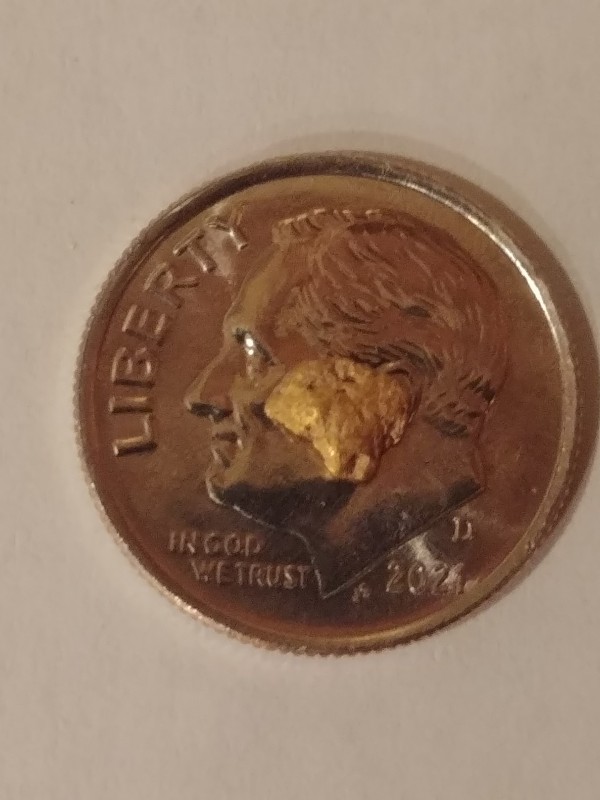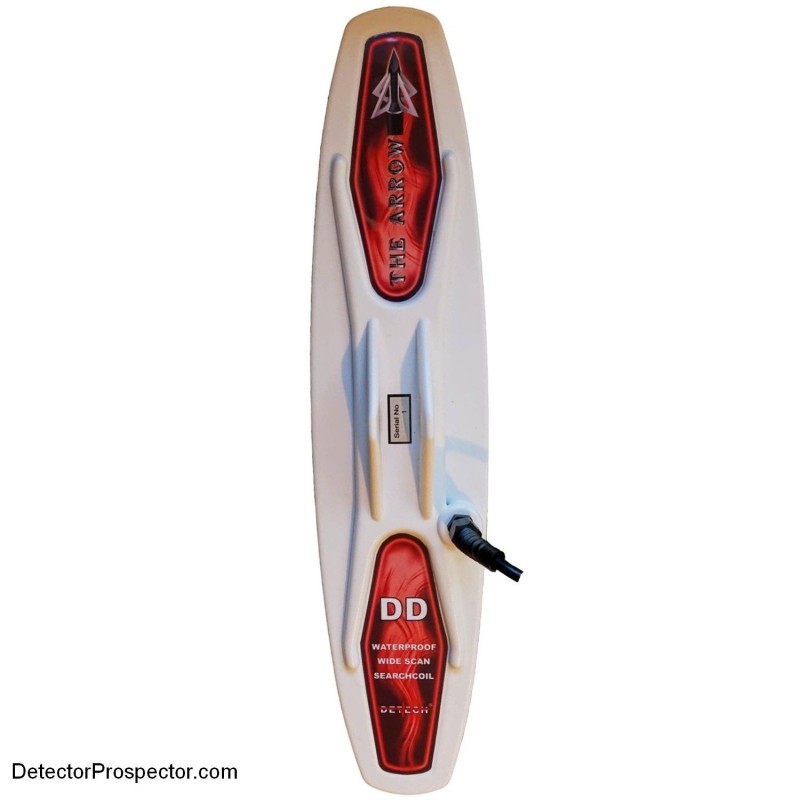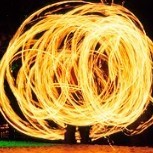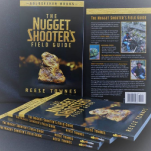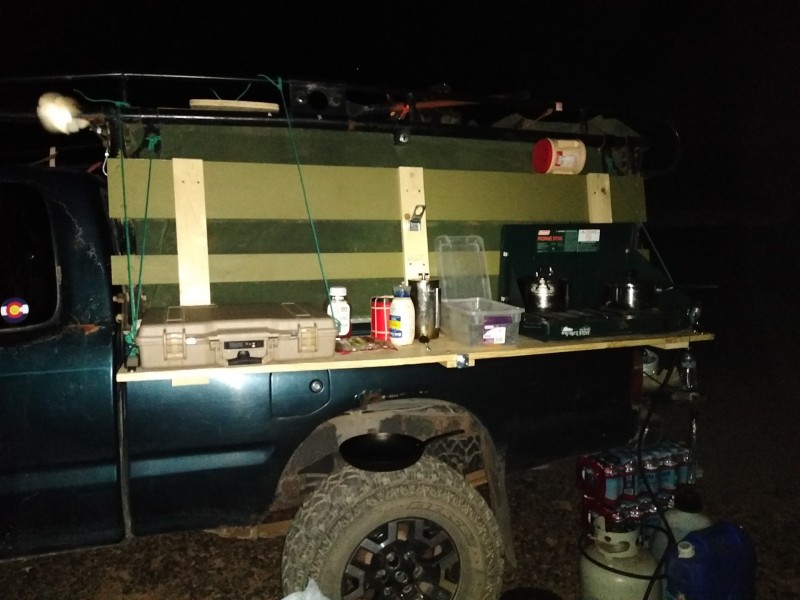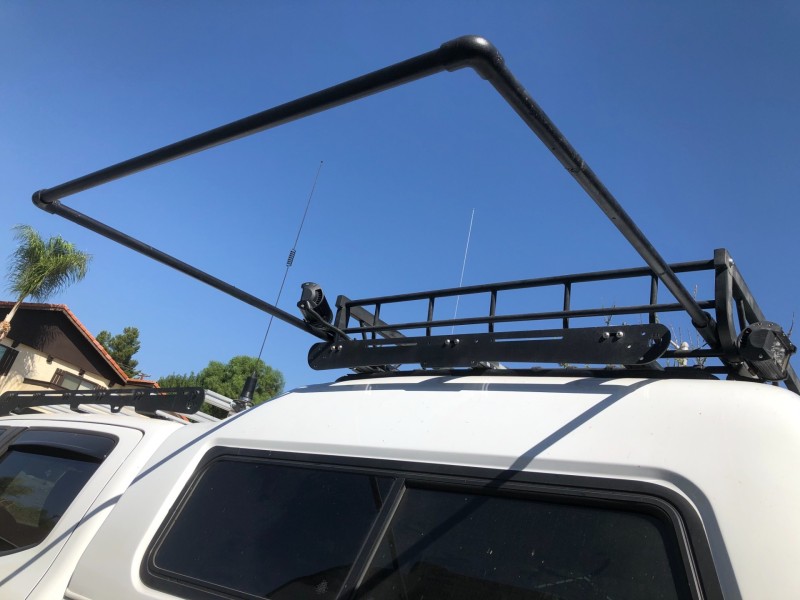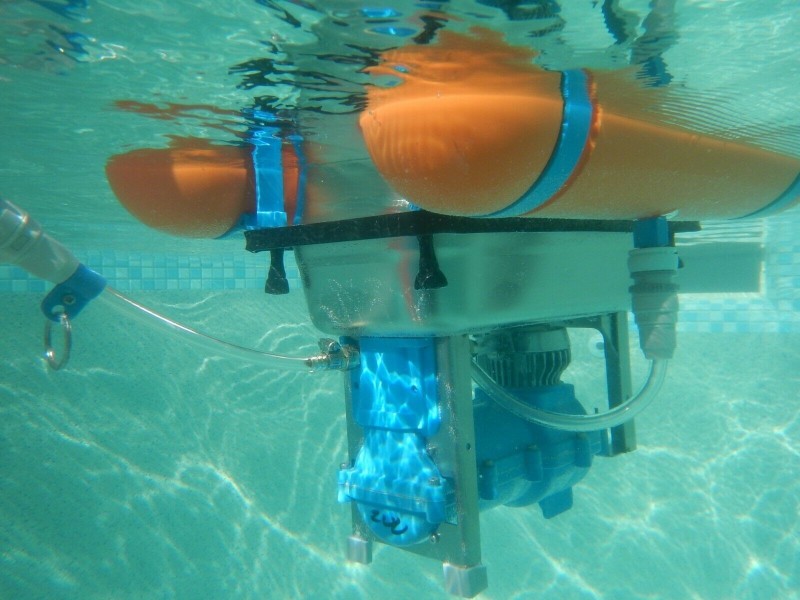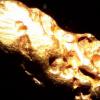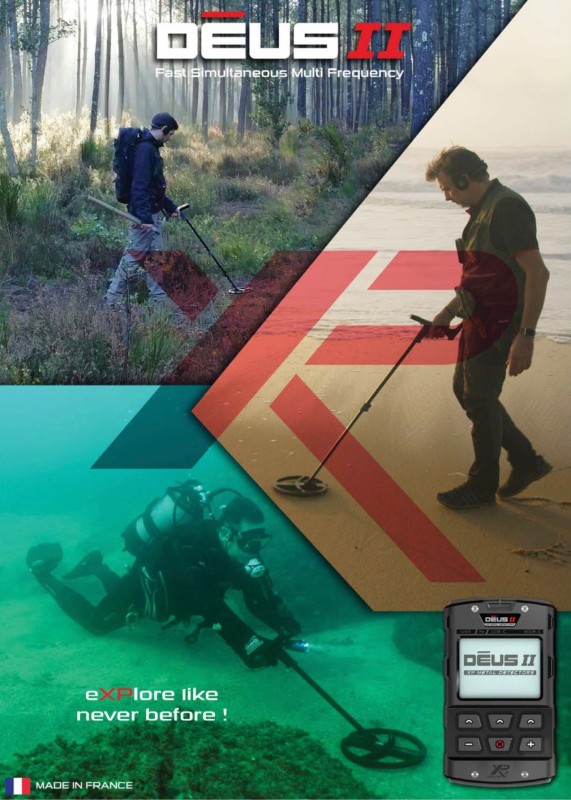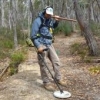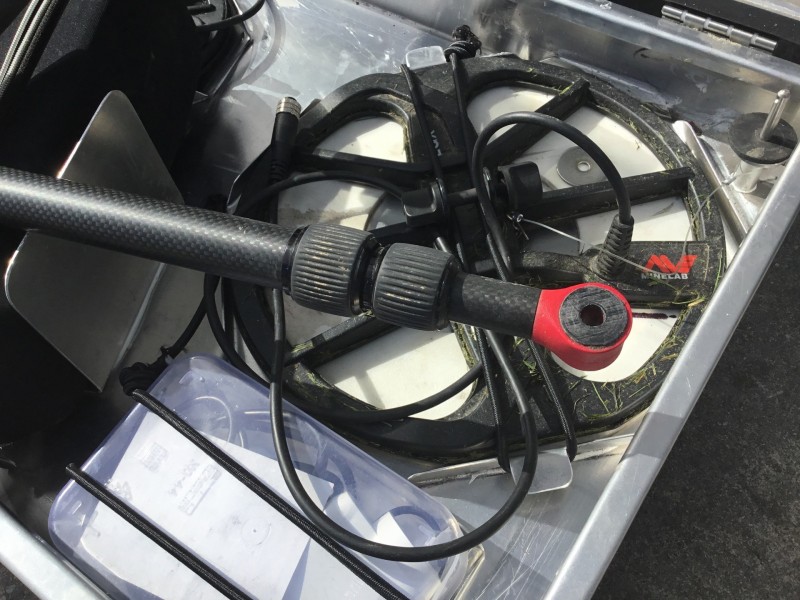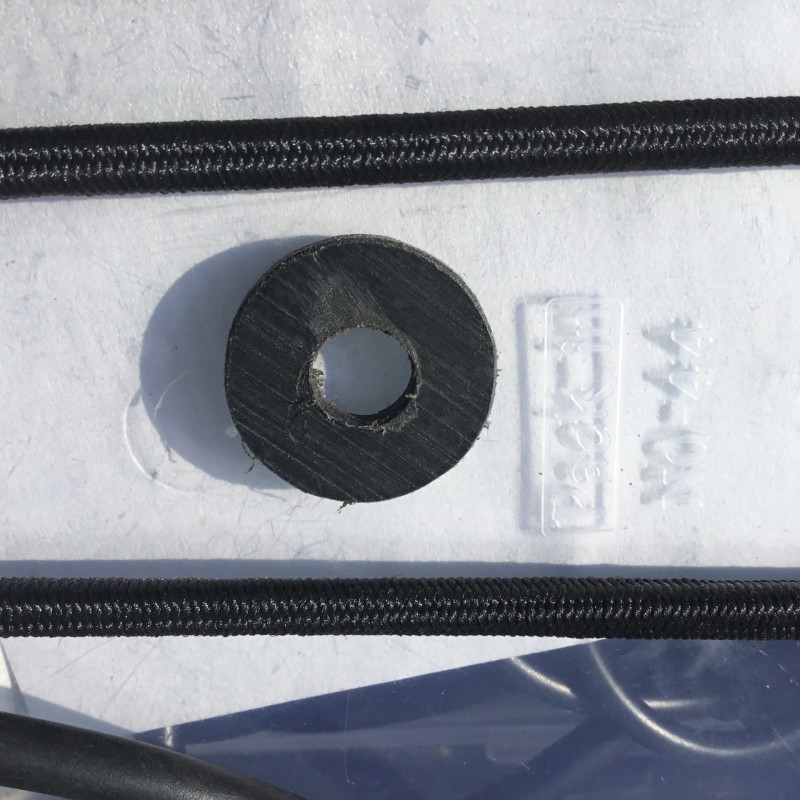Leaderboard
Popular Content
Showing content with the highest reputation on 12/04/2021 in all areas
-
First gold ring with PulseDive I’ve spent the last month extending my search underwater.. I’ve been using two small pony bottles which give me about 50 bars of air (the reserve of a 12 litre tank).. This lasts me about 20 minutes at 4-5 metres and to refill the little tanks takes about two hours with a small 12 volts scuba compressor (it overheats quickly even with a large fan on it).. This might sound like a waste of time and in many ways it is.. That’s why I’m saving up for a PotraHookah, which will give me 4 hours at a maximum of 10 metres, with a 4 hour battery recharge time (small lithium battery).. I’ve already found a lot of coins and even more bottle tops and other crap, that’s the beauty of a dig it all detector.. The ring was buried about 1’’ deep and gave off a weak signal which I nearly ignored as just more crap.. I guess I still have to put in a bit more time on the PulseDive to get in tune with it.. I don’t really mind learning the nuances of another detector as it’s a great pleasure to be back underwater, this time to combine two interests.. I’ve been scuba diving since 1986 when I got my FAUI diving licence and a PADI instructor since 1996.. I stopped logging hours underwater at 3500 hours, and that was about a decade ago.. The PulseDIve has turned out to be a great detector, especially with the 8” coil.. I just wish they made an even bigger coil for it.. I’ve thought about the Seahunter with a 14x10” coil but if I’m going to save up for a PortaHookha that’ll be a long way in the future, as they cost AU$ 1400.. In the meantime I’m sure the PulseDive will prove value for money, if only in terms of sheer enjoyment!13 points
-
10 points
-
Great find, and I hope you get the equipment you are looking for as you deserve it. Please don't have the same woman take the ring to see if it is real like you did with the necklace/bracelet.5 points
-
Thanks for all the replies guys. I downloaded a Geology and Gold mineralization USGS report for Gold Basin and lost basin. I used that to pick two spots to hunt, one north of Gold Hill Mine and one south of Golden Rule Peak. Both areas had exposed quartz veins and pieces of iron stained quartz spread about. The ground phase readings on my Gold Bug Pro were in the range of 82 to 84, typical of other gold fields. I found very few trash targets once away from roads so that was a nice change. It either means there was very little trash (bullets and fragments) to begin with or it has all been cleaned out by metal detectorists. The area south of Golden Rule Peak has lots of dig holes so it looks like it has been pounded hard for many years. Not too many hot rocks in this area so I used my GB-Pro with the DP coil. The few hot rocks I did find had the typical boing sound and after digging a few, to see what they looked like, I stopped digging those. I did not find any nuggets but still recovered about a dozen bullets or associated copper/lead fragments, some very small, so it tells me that the GB-Pro was doing its usual job. On the last day I hunted another spot closer to Senator Peak (old volcano?) and many more hot rocks there so I used the SDC 2300 there. Also no nuggets but again recovered bullets and fragments. I am 5'10" - 150 lbs and the SDC is pretty heavy compared to the GB-Pro. I might look into buying or making a Hip Stick, like I did for the ATX when I had that years ago. Before I did any hunting I did some testing with the SDC-2300 by burying some targets in the ground at gold basin. I have BB size and #8 lead shot test targets. The SDC-2300 and the GB-Pro+DP coil saw the BB lead shot at about the same depth of 4 inches. The SDC-2300 did not detect the #8 bird shot at any depth while the GP-Pro+DP coil sees it at about 1.5 inches. I also have a small gold nugget for testing purposes. The SDC-2300 did not detect the gold nugget at any depth while the GP-Pro+DP coil sees it at about 1 inch. I dont have a scale so I dont know the weight of the test nugget. I have attached a picture of the test nugget on a dime. I read that the SDC-2300 is known for finding small gold so I it is not clear to me what the term "small gold" means. I just want to be able to determine if my SDC-2300 is just as sensitive as all the others or if it has a defect. So the restart of my detecting adventures are still the same as previous years, with no gold found, but I want to learn more about how to find areas that have gold. I like to think that I have the right tools and methods so I need to find ground that can yield. My goal has always been to get to a level where I am able to at least find a few nuggets on each outing. I like getting out in nature and desert camping but if you swing all day and for years on end without finding any nuggets then that become a big skunk to kill. I have discussed my dilemma with other detectorists in the field and they have all told me that as long as I'm finding small bird shot then my equipment and techniques are good and it is just a matter of getting the coil over gold.5 points
-
My apologies also for going off topic. The manual sensitivity control on the 6000 is extremely complex (much more complex than the Stabilizer of the older GPX machines and the Audio Smoothing off the GPZ7000) but outright sensitivity is not affected for near to coil targets even on its lowest setting (they sound fainter but that’s to do with the design of the control not the actual sensitivity). It’s quite easy to check this with a tiny nugget on the surface of the ground. The other way to get a glimpse of what is going on is to be in a quiet location and just raise the manual sensitivity from the lowest point listening to the threshold as you press the plus button until the sensitivity is at its highest point. Listening carefully to what is actually going on will soon give you a inkling into some of the cleverness of GeoSense. 😊 Once you get your head around the way the manual control behaves you’ll soon realise there will be some situations where you will not be able to use it to control noise levels, EMI is a good example but also salt conditions, conductive soil conditions and saturation. My general rule of thumb is once I find myself going down to below the 1/2 mark of the manual control I flick to the Auto+ mode and give it a few minutes to learn the ground, if that is too aggressive and has too much feedback then I will go to Auto mode and allow the conservative aspects of the mode to control the environment. I tend to find people cling onto way to much sensitivity for fear of losing depth and actually make their detectors way too noisy which then impacts on performance or more specifically your ability to find a target signal in amongst the overall noise levels. Lastly you need to keep on the Quick-Trak button, the better you get at keeping the detector in spec with the ground you’re working in the better the performance. Good coil control especially sudden lifting of the coil can impact on the Ground Balance fine tune that savvy operators habitually achieve. JP5 points
-
4 points
-
4 points
-
If, and it is a big if, Deus 2's SMF can really handle the nasty dirt and hot rocks in high iron mineralized gold fields (and at Culpepper VA too) then similar to the Equinox, its roughly 40 kHz SMF Gold Field mode will do just fine for gold prospecting. If its SMF tech fails in that environment those 48 to 81 kHz HF coil single frequencies will be sorely missed. So, I am definitely holding onto my HF coils and my Deus 1 Lite setup until I know for sure how well the Deus 2's SMF does in high iron mineralization and on hot rocks.4 points
-
Deus is not a French word. In French it would be Dieu. Deus (Classical Latin: [ˈd̪e.ʊs], Ecclesiastical Latin: [ˈd̪ɛː.us]) is the Latin word for "god" or "deity". Latin deus and dīvus("divine") are in turn descended from Proto-Indo-European *deiwos, "celestial" or "shining", from the same root as *Dyēus, the reconstructed chief god of the Proto-Indo-European pantheon. In Classical Latin, deus (feminine dea) was a general noun[1] referring to a deity, while in technical usage a divus or divawas a figure who had become divine, such as a divinized emperor. In Late Latin, Deus came to be used mostly for the Christian God. It was inherited by the Romance languages in Galician and Portuguese Deus, Catalan and Sardinian Déu, French and Occitan Dieu, Friulian and Sicilian Diu, Italian Dio, Spanish Dios and (for the Jewish God) Ladino דייו/דיו Dio/Dyo, etc., and by the Celtic languages in Welsh Duw and Irish Dia.4 points
-
Beach hunt # 13 is at the same EMI beach I was at last time. I had planned on a two-day beach hunt but had too many home things to do, so just one hunt this week. I wanted to get more time on the GPX 6000 and the Equinox, so the 5000 stayed home this time out. Tides were low yesterday so a bit more was exposed on the wet slopes, and that’s always a good thing. Since the low tides were in the afternoon, it was a good time to try the 6000 out in the dry. It really does handle the EMI well with the 14DD coil. Even when the train was approaching it handled well with just a noise cancel. When things change just noise cancel, and it settles down. I also ran auto + on it and normal ground. Manual pick up the EMI a little too much in this hotspot. Buried a quarter at 12” and it picked it up faintly. I bet I could have got another inch out of it. So not deep enough for what I want from it, but it did work out the EMI better than any other Minelab I own. This machine really is designed for the small gold, as it was intended to do. Not as versatile as the 5000, but I can see why the gold guys love this machine! It will stay in my arsenal of machines for completely cleansing the first 12” of all minute targets. Sounds like a negative cleaning up every little scrap, but if you have a very productive beach (or relic) site with very deep targets, it will remove a lot of masking targets. I did later switch to using the Steve’s method of discrimination, so as to not dig the small aluminum. The Equinox performed nicely on some deep, wet sand targets. Although not clean signals, the amount of deep lead weights I got surprised me. If the lead is still there, the gold rings may be there as well. I may try the larger coil in the same situation if tides allow next time out. Although I did not get any gold or silver, I had a great time out with both machines and got a bit more involved on what I can get from them in the areas I hunt. So far, the weather is holding out for some cold, but pleasant hunts.4 points
-
3 points
-
When they're scrolling through the bunch of Minelab coils and mainly the GPX coils at the start there you see why the legecy model GPX is legendary, this is just one manufacturer out of many that makes a bunch of coils for it, sadly these days are numbered with more recent detectors. It is beyond frustrating when detector manufacturers lock us out of buying aftermarket coils, and now increasingly it's happening with VLF's too. They seem to want us to buy their coils and nothing else. I really hope Nokta isn't starting to take that path, every time I direct a question to Dilek about that it with Nel announcing Simplex coils and never ending up making them and now the question about the Nel and Detech on the Legend coils oddly it goes unnoticed yet less important questions are answered. Detech make some really good coils including one of my favourite VLF coils the Ultimate 13". I would own that coil in a heartbeat for my Nox if I could, now the Nox is going to have competition would be the right time to release a firmware update to disable coil validation checking and open up the Nox to aftermarket coils and watch the manufacturers scramble to make coils for it and the Nox will get renewed life to it and a frenzy of videos popping up all over the internet of the Nox doing tests with all these new coils. I live in a dreamland but how cool would it be placing an order for a Detech Ultimate, Nel Snake and Detech Arrow for your Nox for Christmas!3 points
-
Vanquish - lower shaft : polymer - mid shaft : aluminium - control box + handle = plastic - rear shaft : aluminium - arm rest : plastic3 points
-
Once travel is up and running again like the good old days you may see a guy floating around in Alma Bay with a pulse dive looking for rings, that guy would be me. I like the idea of using something discrete like that rather than a full size detector. I prefer to be a stealth detectorist, rarely spotted by the general public with a detector in my hands.3 points
-
https://www.theguardian.com/uk-news/2021/dec/03/woman-reunited-with-wedding-ring-she-lost-50-years-ago-western-isles?CMP=Share_iOSApp_Other3 points
-
3 points
-
Are you sure it wasnt another prospector trying to tell you to go away?🤣3 points
-
Tough decision for me. More metal detectors or more guns with no ammo!3 points
-
Looks like I might have ruffled some feathers. Oh well. I was just trying to answer Joe’s questions, not stir up trouble. I am really impressed with the features and potential capabilities of the Deus 2. If it’s SMF technology works really well in more than just salt beach scenarios, XP will truly have a full featured, versatile, general purpose SMF detector that similar to the Equinox will be able to detect very well in a multitude of soil conditions and for a wide variety of target conductivity including small gold nugget prospecting.3 points
-
In this video he mentions it will support a new version of the Go Terrain App that's coming soon. It's in French so you have to use Youtube translator.3 points
-
Reese, I like your set up! So I have to ask, what are you using for heating? I use and suggest a diesel forced air 12v heater, they work really well and you don’t breathe exhaust fumes or possible carbon monoxide like the other type that uses propane and doesn’t vent the exhaust fumes. Something like this- I mounted mine inside an old toolbox and we put it on the ground outside of the truck and run the heat into our rooftop tent using a dryer vent hose. https://www.amazon.com/dp/B07VT24CLK/ref=cm_sw_r_cp_api_glt_fabc_G5K83EB5B7GKAJ7AM7H6?_encoding=UTF8&psc=13 points
-
I made a cheapo telescoping slideout awning using PVC pipes to do something similar on mine- it forms a square roof frame to hang a shower curtain or tarp. There’s two larger pipes mounted to my roof rack, and the smaller diameter frame pipes slide into it. I tied a string between both pipe ends just long enough to act as a stop to keep the inner pipe from being pulled out too far.3 points
-
That's the beauty of detecting underwater, no one can see you.. when I eventually buy a PortaHookah I'll paint it marine camouflage for extra stealth 😃.. the little dive flag also has to go, I'll replace it with a pirate flag.. I'll leave a few rings for you.. and you're more than welcome to borrow the PortaHookah..2 points
-
The PulseDive is a great little detector that does not cost a fortune, and less spent on gear means easier to pay the gear off with finds.2 points
-
I just watched the video. Excellent and professional . It is confirmed that a Deus2 "lite" version will be available , called Deus2 WS6 Master. Look at the end of the video at 8:20 . I dont know why they didnt simply called it Deus2 Lite btw ... I could be interested by this version as it will be cheaper than the full version as I dont really need the control box for my kind of hunting ...2 points
-
Very cool. I have a Seahunter and use the 10x14 for beach combing. It is a little boyant in the salt unlike the 8" coil and think that might give you some trouble. 10x14 is also hits pretty deep so target recovery might be a problem. I don't know how deep the Pulse Dive with 8" coil goes but guessing the SH 8" might be deeper.2 points
-
I heard the same thing when I was there but the story kept changing. The first guy that mentioned it said it was a 1 oz nugget. The next guy said it was 2 oz. I asked if any of them had seen it and both said no. So now it is 4 oz. Gota love those expanding nuggets.2 points
-
2 points
-
I will amend that to say that for almost every non-ferrous target id number, there is a piece of aluminum. Detectors know nothing about metal. The tiniest aluminum bits read down into the ferrous range, and a coke can will read like a quarter. The disc scale is mostly just an odds game based on certain identical targets always reading about the same, like a dime for instance. It can work for U.S. coin detectorists. But if you detect UK farm fields, you simply dig all non-ferrous, as even small thin or cut silver coins read way lower than people would ever think who have not seen it. The target id systems are really more affected by size than anything else, low numbers being small stuff, and higher numbers being larger stuff.2 points
-
First of all saying ORX and Nox have “two” gold modes each is a misnomer because in both detectors the only thing that differentiates the “two” gold modes are the default manually adjustable settings associated with recovery speed/reactivity and in the case of ORX, default frequency and default sensitivity. For the Equinox gold SMF modes, we are not talking differences in the fundamental Multi IQ profiles. In other words, “Gold 1” and “2” modes on Equinox and “Gold” and “Fine Gold” modes on ORX can be manually set up to be functionally indistinguishable from one another on each detector. In fact, Deus II, unlike Deus I or ORX actually does have two “gold field” style pseudo all-metal modes: traditional “gold field” and “relic”, each with a fundamentally different SMF profile consistent with the diverse objectives of each mode. Furthermore, I would also not necessarily presume the SMF “effective” top end frequency is constrained to 40 kHz. Yes that is the single frequency top end (actually 45.45 kHz with frequency shift applied, per the manual). But it is interesting to note at the top of the detector specs table on page 43 of the manual, the RF Detection Frequency range is specified as 3.9 kHz to 135.7 kHz. That indicates to me that in SMF there is plenty of usable HF frequency spectra above 40 kHz in the “40 kHz, frequency addition” SMF modes which includes: Program 2 - Sensitive, Program 3 - Sensi FT, Program 4 - Fast, and Program 8 - Gold Field. Won’t know until we test it, but I suspect the Deus HF coils may actually be somewhat obsoleted by the Deus II SMF coils other than the missing (and arguably essential) 10x5 or similar size elliptical form factor. So while Deus II may not be specifically geared for gold, it could conceivably hold its own or surpass Deus I/ORX HF gold performance in SMF. We’ll see once Steve gets his hands on it.2 points
-
Nice video N.E. and thanks for taking the time to do it. Most folks won't spend the time and energy needed to do them, so your desire to do so is impressive. I used to do quite a few videos, but as my time gets more limited, I'd rather hunt. Your coil control is quite impressive and reminds me of the older Minelabs and a GB-2 where I'd wear the coil cover out in hardly any time. I used to scrape the cover across the ground trying to get every little bit of depth possible. I've noticed the GPX-6000 is not quite so smooth to allow that for me. In fact, as many newer detector operators don't have the "target vs ground vs detector" sounds figured out as well as us oldtimers, so I've been training them to keep the coil a slight bit off the ground. I realize your ears are tuned well enough to catch most differences. I've yet to put any time on the 14" DD as most of the soils I hunt don't need it, but I've yet to get to Arizona around any high power lines either. It's good to see other well known gold hunters get fooled by the occasional "hot ground" as I do the same. But, I'd rather get fooled on occasion than walk away as many times those weakest and semi targets are what turn to be gold. When in doubt, check it out, is my mentality. Interesting to see the 14" respond better than the 11", but I guess it's all part of the DD vs MONO and amount of extra soil the larger 14" is seeing and analyzing vs the smaller 11", about 22%. Thanks again for taking the time to share.2 points
-
They maybe still available, another new start up company in Canada it seems bought out Angus Mackirk in 2015, here's the site I found. https://brokenback.ca/about-us/2 points
-
Northeast Thanks for the video! It’s said a picture is like saying a thousand words and guys like you who are willing to make a video says so much more. Next time if you make another give us a shot of the guy behind the camera. Here I am with a face only a mother could love and surely yours can’t be that bad . Here’s one for you that you may not believe. I have a 6000 in a room with all my other detectors that don’t belong to me . This friend in another state buys it and has it sent to me to check out. He wants me to learn how to use it and down the road some time are another show him. I’ve got the gold to do some testing but a thousand miles away from gold country. I guess that’s one way to get me to come and see him. Take care Northeast ! Chuck2 points
-
Another story hit the media in NZ about a guy with his Nox finding a gold medal that was lost 60 years ago at the beach and was found and returned to the owners family. It's great to see these positive metal detecting stories hitting our media as metal detecting here is such an unknown obscure hobby although TV shows like Aussie Gold Hunters have now hit our free to air TV channels so that will cause some awareness of what these beeping noisy sticks are. https://www.stuff.co.nz/timaru-herald/news/127163756/shooting-medal-discovered-on-south-canterbury-beach-more-than-60-years-after-being-lost?cid=app-iPhone My phones aren't near as good as these stories. I found what I believe is the owner of one of the phones although that phone is dead and has no memory card in it, not the ski girl yet, still waiting to see if she'll reply to Facebook or email messages, not looking promising which is pretty weird. Maybe she no longer works there, and her facebook settings are hiding the messages from her. My wife thinks she can contact someone on her freinds list and find someone that responds then get them to tell her. We'll see how that goes.2 points
-
Whether you’re on remote prospecting trips or just weathering a zombie apocalypse, your rig has all the bases covered! Well thought out, Reese.2 points
-
I just tested two GPX11 coils for different customers who were complaining about touch sensitivity, both coils when tested were perfectly fine. The 6000 is an incredibly sensitive high end metal detector and in both cases the first thing I did was take a look at the skid plate and sure enough both showed large amounts of wear damage from hard scrubbing in highly variable mineralised dirt (especially deep contact scratches/gouges), both coils were also used when the ground was damp and just as another huge weather front came through which has now drowned the surrounding area. Both coils when tested could be bashed and knocked about with NO touch noise, so the noise being heard was from the variable ground signal not from touch falsing. In variable soils that have saturation signals the particles in the gravels that cause the saturation along with clay particles become worse when wet so getting the coil right onto the ground will cause more than double the noise that was heard when the ground was dry, you combine that with high temperatures (36C and higher prior to the rain) where the coil cables become very soft the combination of increased salt signal and conductive signals in combination with more EMI from approaching weather and the constant ground signals created by scrubbing the coil will make the detector sound like it is touch sensitive. Best bet when the ground is wet and the ground is conductive is to keep the coil up a bit and not actually contacting the ground, this will allow the Ground Balance to function correctly and more than halve the variable signals created by close to ground contact. Keep the coil lead a little loose on the shafts to prevent stiction especially in warmer weather to avoid cable noise, try to avoid rapid coil change of direction movements as this will exacerbate cable wobble noise (left right rapid signals as the shafts flex, but also up/down salt signals because the ground is wet). Lowering the Sensitivity on the manual mode will not remove these problem signals, only good coil control and not contacting the ground will do that. If you actually want to reduce “actual” sensitivity then you need to use one of the two Auto modes, my recommendation when the ground is water logged and the ground is variable ect is to use the Auto mode and allow the sensitivity to measure the ground you are working without all the constant ground feedback, this especially helps if you do not have precise coil control. Auto and Auto+ are the only modes that actually change the ‘real’ sensitivity on the GPX6000, so in quiet soils the Auto+ can increase the actual sensitivity beyond the manual modes preset, whereas Auto mode is more conservative but in situations like we have here in Clermont at the moment it can make a huge difference to your ability to continue detecting after BIG rain events. Right now because of the conditions I have three choices if I want to go detecting with the GPX6000, I can either use manual mode on a conservative setting and maintain very precise coil control, or I can use the Auto mode if the manual mode is too fatiguing (especially if I have to lower the manual sensitivity control to below 1/3) or lastly I can revert to a DD coil and use Salt mode in extreme cases. I suggest the salt mode option last because it has the biggest impact on outright depth compared to the 11” Mono coil option so is best used in extremely salty ground where the mono coil is just too noisy. Hope this helps JP2 points
-
1 point
-
I almost always say almost, just to cover my posterior Great confirmation post Chuck, thanks. I guess we can say that there is a piece of aluminum that will deliver every target id possible, with the exception of low ferrous/ground readings. And small aluminum buried in high magnetite soil will even deliver a few of those. The same applies to most metal, it’s more about the size, not any metal reading in one place on the scale. When nugget detecting, a major strategy for dealing with junk targets is to have some prior knowledge of the gold size and type an area historically produces. If it’s small gold only, digging high target id numbers is likely to be anything but a nugget. So basically you just seek out and dig small target indications. Conversely, while in the UK, I set my Equinox target id to block the low end purely to eliminate the really small targets, after a couple days of sampling what those might be.1 point
-
The use of the word 'almost' left me wondering where the gap might be. I've wondered how high aluminum could read so decided to do some air tests with the following Al alloy targets: I'm using the Minelab Equinox dTID scale (-9 through 40 where negative numbers represent the ferrous range). Steve H. mentioned USA clad quarter coin being equivalent (dTID) to a soft drink can. That hits ~30 on this scale. Even large USA 90% silver coins aren't much higher with silver dollar (last for circulation minted in 1935) hitting around 34-35. In the photo, lower right is a standard(?) USA license plate (12" length, thickness 0.8 mm or about 1/32 inch), upper left is a rather thick cast aluminum engine part, I think from a sprint car (powerful short oval track racecar). The other three items are all of nominal 1/16" (~1.5 mm) thickness. None of these was found with a metal detector, BTW. I used the 11" stock coil in Park 1 mode and turned down the gain to 15 (out of 25 max). I held the coil far enough from the target so that the coil's central transmit E/M field was activating the target (i.e. not the localized high field region around the coil's outer rim). The two lower items gave TID's of ~37. The three upper targets all read solid 40 (max for the Eqx).1 point
-
Thrace Metal Detectors. Atanas is great and he has them for many top models. Free shipping and euro not the more expensive British Pounds. I would think many folks would love to have one especially for competition hunts. Mine will be here in Virginia in about 10 days. Should be fun.1 point
-
The PulseDive is not too bad.. I usually have to dig with my hands a bit rather than just fan over the target.. the ring was also pretty small.. the edges of the coil are also sensitive, i wave it around on its side in between rocks/corals.. I've also have the PD pinpointer but haven't used it much as this method is working out pretty good to get into small gaps.. i guess this would be hard to do with a Seahunter..1 point
-
1 point
-
I'm up at Gold Basin now for another 1-2 week stint. I was told this morning that a newbie with a Gpx 4500 just found a four ounce nugget up here a few days ago. I think I am going to need a longer lower shaft for my 5000 when running that 25"NF DDX coil. Everything on me was setting it off. Even my glasses.1 point
-
Yah I'm sure. I heard Cody (the dog) getting into something on this side of the truck below my stove counter. It instantly made me think of Walter Matthau in Grumpier Old Men, with the cat.1 point
-
I have just read the manual , I am very impressed by the documentation quality and the Deus2 features . Very professional1 point
-
It is very effective in High EMI areas, even in the Salt setting.1 point
-
A really good read. More than ample settings to mess about with. With regards to detecting performance between Deus 2 and Equinox 800 11" to 11" I guess it will depend on the day and the driver. Ergonomics and the 9" coil is what Deus is all about. A very fun detector to have sitting in the car or backpack.1 point
-
I'm doing well with the Anfibio lately--its good for going behind the army of NOX hunters--deeper and just as good at spotting quality responses. I let the junk beat these dig all guys. cjc1 point
-
1 point
-
Thinking of what you said about being afraid to try to turn it in tight spots seemed reasonable. But after seeing it, it looks small enough that if you had to you could just unhook, turn the Jeep and then turn the trailer by hand.1 point




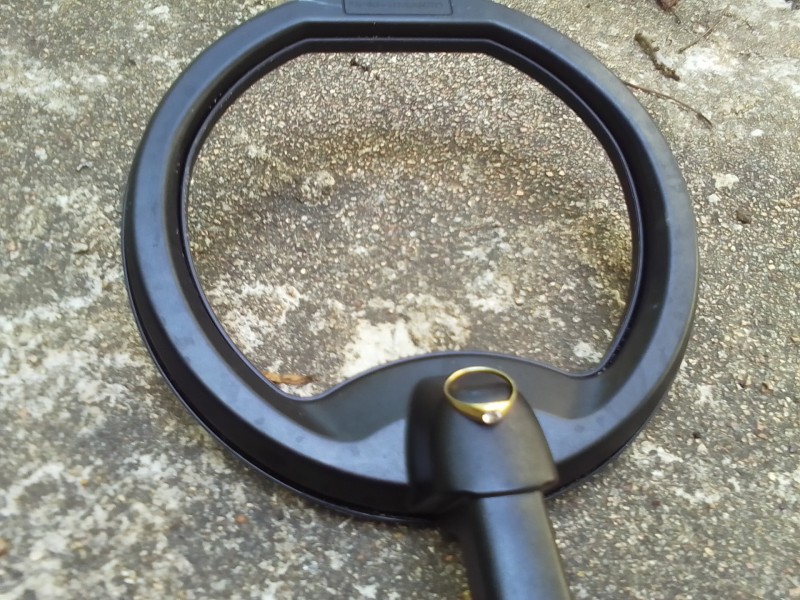
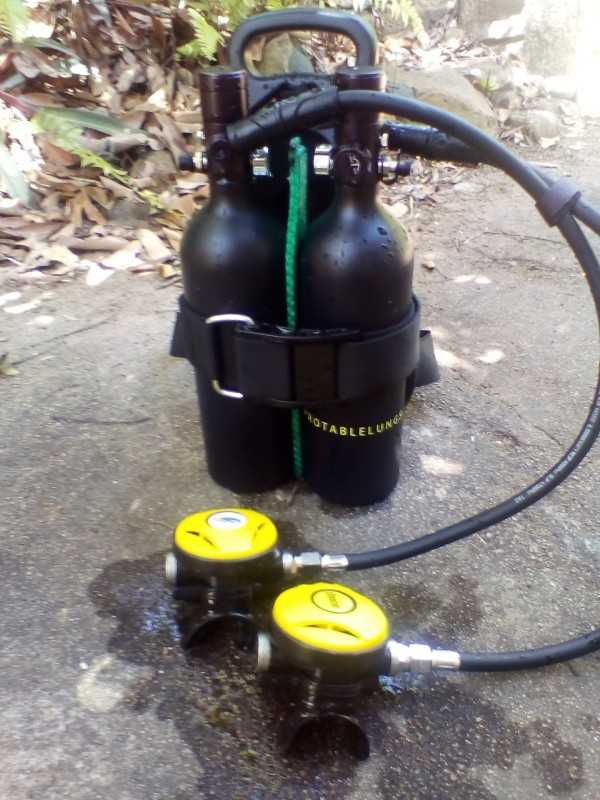
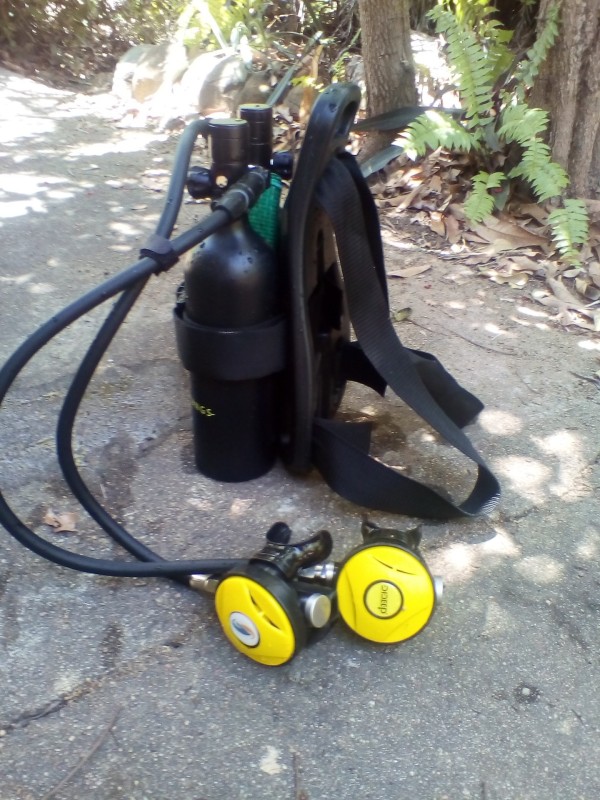
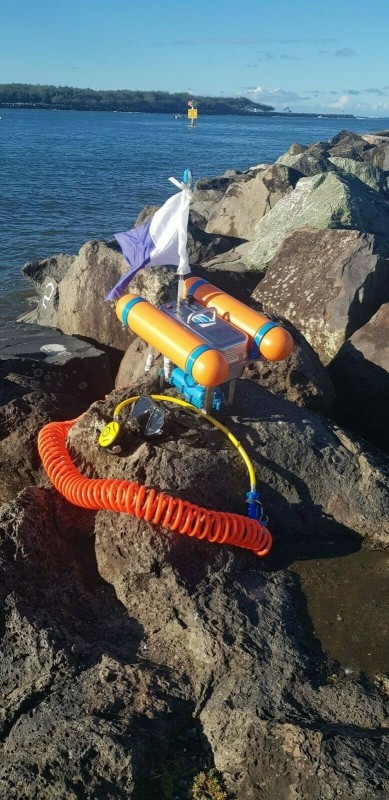
.thumb.jpg.95344db3aeef0a4c6c73420daa366191.jpg)
